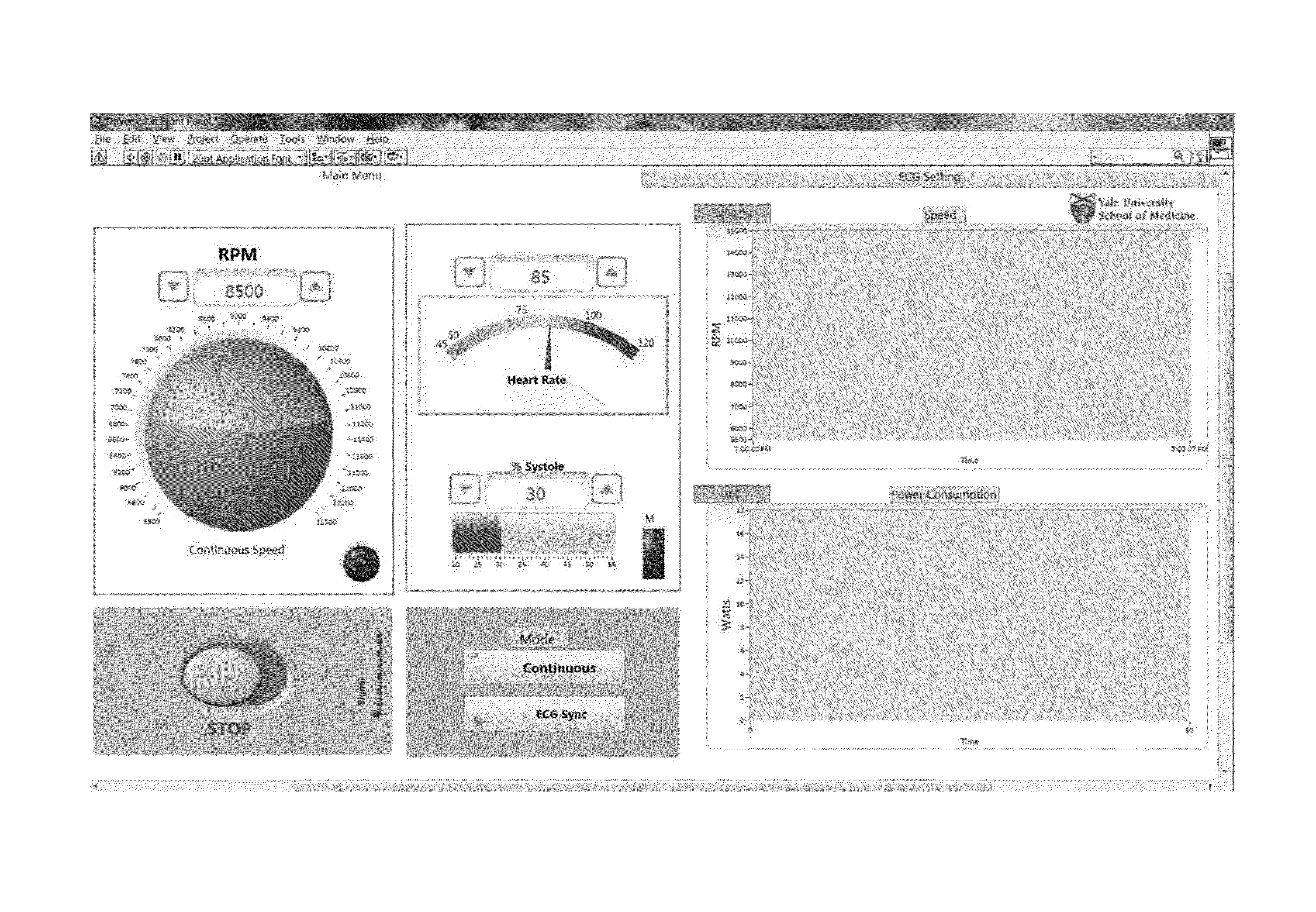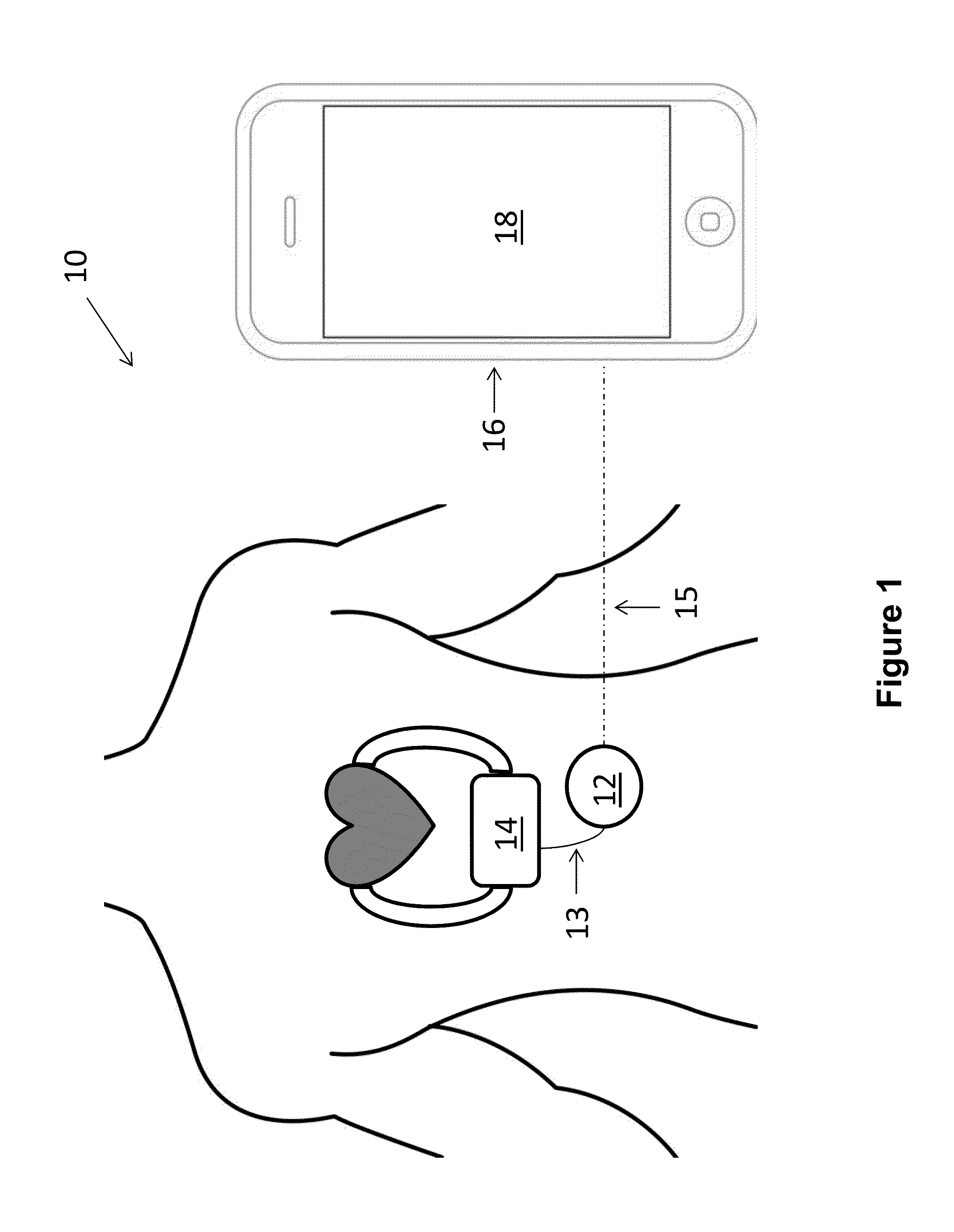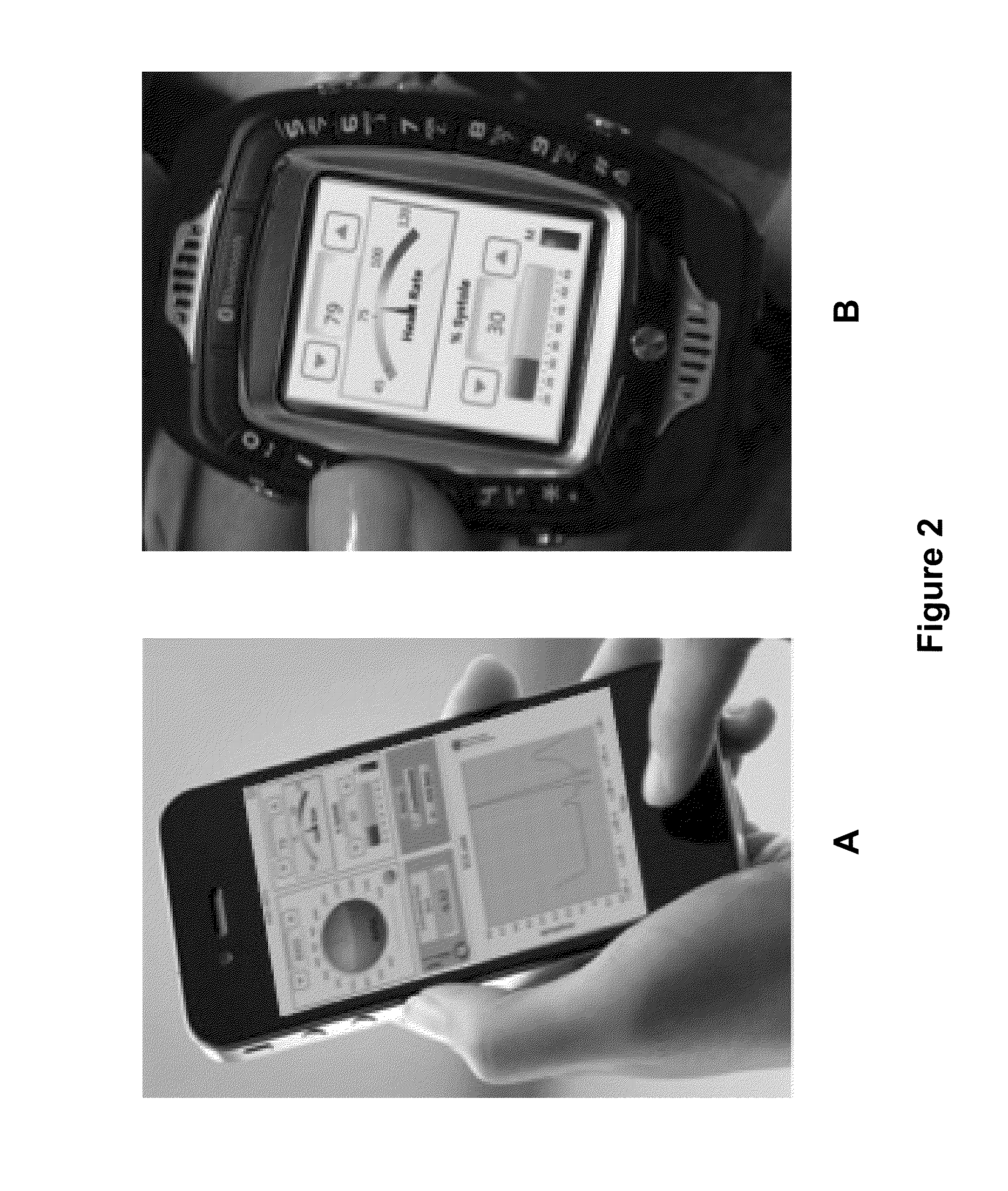Implantable Heart Pump Controller
a controller and heart pump technology, applied in the direction of heart stimulators, prostheses, therapy, etc., can solve the problems of increased medical costs, significant negative impact on patient quality of life, and high mechanical failure of pneumatically driven positive displacement pumps, so as to increase reduce the speed of ventricular assist devices
- Summary
- Abstract
- Description
- Claims
- Application Information
AI Technical Summary
Benefits of technology
Problems solved by technology
Method used
Image
Examples
experimental examples
[0045]The invention is further described in detail by reference to the following experimental examples. These examples are provided for purposes of illustration only, and are not intended to be limiting unless otherwise specified. Thus, the invention should in no way be construed as being limited to the following examples, but rather, should be construed to encompass any and all variations which become evident as a result of the teaching provided herein.
[0046]Without further description, it is believed that one of ordinary skill in the art can, using the preceding description and the following illustrative examples, make and utilize the present invention and practice the claimed methods. The following working examples therefore, specifically point out the preferred embodiments of the present invention, and are not to be construed as limiting in any way the remainder of the disclosure.
example 1
A Physiological, Pulsatile Driver for Continuous Flow Left Ventricular Assist Device (LVAD): Innovation Using an Implantable Ultra-Compact Microcontroller with a Wireless Graphical User Interface
[0047]Described herein is the demonstration of an ultra-compact implantable microcontroller (UMC-Physio) (FIG. 5A) capable of pulsed operation in a rotary pump with wireless communication to a graphical user interface outside the body.
[0048]A three phase axial pump (HeartMate II) was used with an inline controller designed on an ultra-compact printed circuit board with embedded wireless algorithm to establish a communication network between the UMC-Physio and a graphical user interface to display the information and configuration settings on a computing device, such as a smartphone (FIG. 5B).
[0049]Signal processing and filtering methods were employed to analyze EKG signal and to adjust speed during systole and diastole for a co-pulsation, counter-pulsation or a fixed mode operation. Flow was...
example 2
Implantable Physiologic Controller for Left Ventricular Assist Devices with Telemetry Capability
[0051]Rotary type left ventricular assist devices have mitigated the problem of durability associated with earlier pulsatile pumps and demonstrated improved survival. However, the compromise is the loss of pulsatility due to continuous flow and retained percutaneous driveline leading to increased mortality and morbidity. Lack of pulsatility is implicated in increased gastrointestinal bleeding, aortic incompetence, and diastolic hypertension. Presented herein is a novel, wirelessly powered, ultra-compact, implantable physiologic controller capable of running a left ventricular assist device in a pulsatile mode with wireless power delivery.
[0052]The schematic of the presently described system was laid out on a circuit board to wirelessly receive power and run a left ventricular assist device with required safety and backup measures. An antenna and wireless network for telemetry was embedded...
PUM
 Login to View More
Login to View More Abstract
Description
Claims
Application Information
 Login to View More
Login to View More - R&D
- Intellectual Property
- Life Sciences
- Materials
- Tech Scout
- Unparalleled Data Quality
- Higher Quality Content
- 60% Fewer Hallucinations
Browse by: Latest US Patents, China's latest patents, Technical Efficacy Thesaurus, Application Domain, Technology Topic, Popular Technical Reports.
© 2025 PatSnap. All rights reserved.Legal|Privacy policy|Modern Slavery Act Transparency Statement|Sitemap|About US| Contact US: help@patsnap.com



